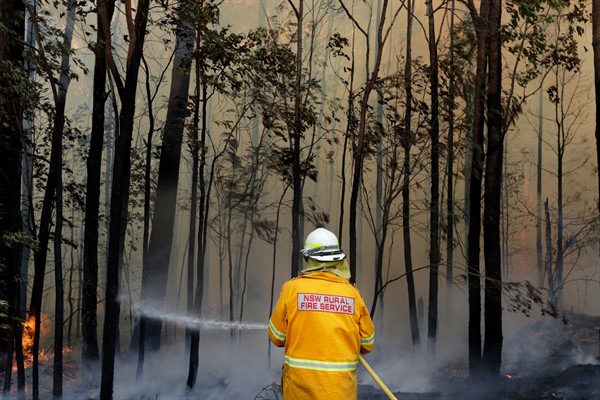There was a time when it was widely asserted that the onset of climate catastrophe would shove society out of its complacency and into aggressive support for action to address climate change. Once the consequences of burning so many fossil fuels were felt not just by those least responsible for the bulk of emissions, in the Global South, but in wealthier countries too, the argument went, the problem would shift from being an abstract warning from scientists to a clear and present danger.
The season of bushfires that raged in Australia from December 2019 to February 2020—known locally as the Black Summer—was the first major disaster intensified by climate change to tear into a wealthy, predominantly white, carbon-exporting country. In comparison to many of the other bushfires in Australia in recent memory, these blazes were more intense and far more threatening. Entire cities were shrouded in smoke for days on end; older people and families with infants were warned to stay inside. Hundreds of thousands of Australians were asked to evacuate their homes. The military was called in, deploying naval vessels and aircraft to rescue people trapped by the fires. Images of blood red skies and towns bathed in deep orange flooded the world’s media, with the catastrophe becoming, briefly, the No. 1 international news story.
By the time firefighters were able to smother the flames, 24 million hectares—more than 59 million acres—had burned down, 33 people had lost their lives, 3,000 homes had been destroyed, and more than 3 billion animals had been killed or displaced. Many threatened species and sensitive ecological areas were extensively harmed, according to a Royal Commission the government tasked with investigating the disaster.

